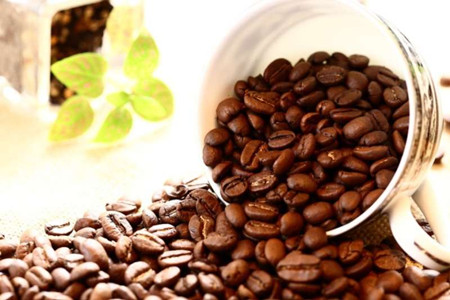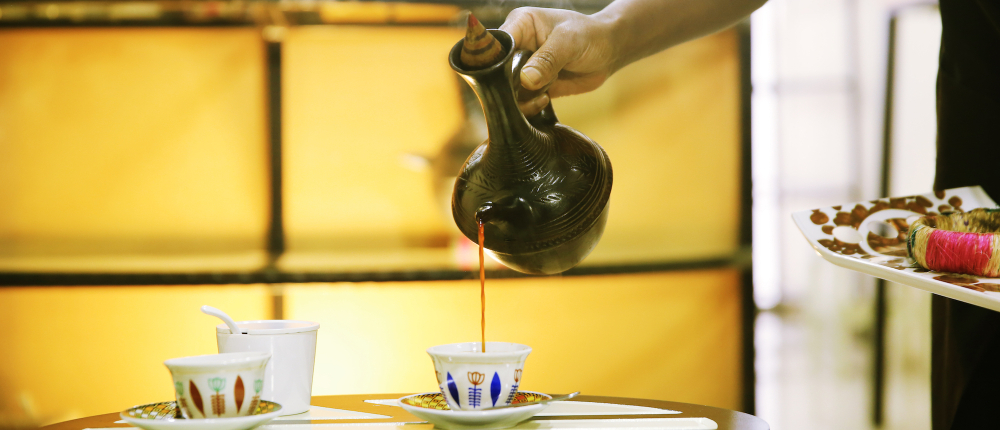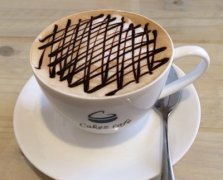Basic introduction of Indonesia Mantenin Fine Coffee Gold Mantenin Fine Coffee
Compared to Blue Mountain Coffee, Gold Mandolin was no less impressive. These two days have been searching for the origin of gold mantelin on the Internet. After reading Rose's description of gold mantelin, I want to know more about the origin of gold mantelin, why it is called gold mantelin, and its mysterious taste. This will be edited one by one for curious you to answer it.

Mantenin is not the name of a region, a place, a port, or a coffee variety. How did it get its name? In fact, it is a pronunciation error of the Mandheling ethnic group in Indonesia. During the Japanese occupation of Indonesia in World War II, a Japanese soldier drank excellent coffee in a cafe and asked the owner the name of the coffee. The owner mistook him for asking where you were from. And he answered: Mandenin. After the war, Japanese soldiers recalled drinking "Mantenin" in Indonesia. So Indonesia asked the passenger to transport 15 tons of coffee to Japan, which was very popular. Thus the name of Mantenen spread, and the coffee merchant was now known as PWN. Known as mandheling, mandheling is found all over lake Toba in northern Sumatra. The finished product has unique fragrance of herbs and trees.
Premium Gold Mandrine
Speaking of the past and present lives of gold mantenin, I have to start with mantenin. Due to the climatic conditions in Lindong, Sumatra, Indonesia, and the cultivation level of coffee farmers, due to the precious local water resources, it was initially treated by sunlight, but the quality was unstable. Therefore, it was changed to a semi-sunlight method similar to Brazil. However, Indonesia's climate was humid, so it was impossible to take out sticky pods and dry them outdoors for 2 to 3 days. Doing so in Indonesia would make pods moldy. Therefore, drying for several hours to one day, The moisture content will be 20~ 30%, pectin has not yet solidified by the bean merchant to buy, take back to the simple processing plant to remove pectin with a machine, so as to avoid excessive fermentation of pectin and sour smell. That is to say, linton mantadine scrapes off the pectin layer before the pods are dry, which is the main reason why mantadine has a lower acid flavor and a higher alcohol content. After a little drying, the coffee pods contain about 18% water. Finally, the fresh pods are purchased by the exporters of Medan and placed in large bean drying fields or dried by machines until the water content is 12%. Therefore, the drying process of Linton Mantning was divided into three stages: farmers, bean collectors and exporters because of the shortage of hard equipment. Mantenine's unique herbal and woody aromas. Due to high humidity, the pectin layer is dried in three stages. This is also a rare treatment in the world, which accidentally creates a low acid, thick and smoky flavor of mantadine. Due to the variables of the three-stage drying method and the rough processing method, Mantenin is the most unstable quality of fine coffee. Chop beans, moldy beans, black beans, and unripe beans abound, making it a headache for bakers to spend a lot of time picking out defective beans before baking, but that doesn't detract from the world's preference for full-bodied mantelin. In order to improve the problem of high defect in mantinin beans, the Japanese adopted stricter quality control more than ten years ago. After drying the raw beans, they were screened for density and color separation. Finally, they went through four manual selection processes to eliminate defective beans and produce dark green gold mantinin with uniform bean phase.
Gold mantelin tastes cleaner than lindon mantelin. The original herbal, earthy and woody flavors of mantelin are almost gone, but the caramel sweetness is stronger and the fruit acid flavor is brighter and more elegant. Generally, lindon mantinine is baked until the second explosion, which can reduce the impurity taste, but gold mantinine has good transparency and sweet feeling before or after the second explosion, and the baking interpretation space is wider.
However, Indonesia's Pwani Company registered the Golden Mandheling trademark first, forcing the Japanese company to change the Golden Mandheling to Gold Top Mandheling.
Important Notice :
前街咖啡 FrontStreet Coffee has moved to new addredd:
FrontStreet Coffee Address: 315,Donghua East Road,GuangZhou
Tel:020 38364473
- Prev

Ethiopian coffee producing region Flavor Description Ethiopian Yegashfi coffee characteristics Taste introduction
The coffee tree originated in Ethiopia, where it was originally a wild plant, and the name coffee comes from the Ethiopian town of Kaffa. Humans probably knew how to cultivate coffee trees as early as the 9th century. Ethiopia coffee origin: Ethiopia many coffee
- Next

Introduction of Blue Mountain Coffee the taste characteristics of Blue Mountain Coffee the quality of Blue Mountain Coffee
Charcoal roasted Super Blue Mountain Coffee ◆ Origin: Jamaica Jamaica ◆ baking method: City Roast ◆ characteristics: 1. Palate: slightly sour, supple, sweet and smooth. two。 Fragrance: fragrance. 3. Vision: coffee beans are slightly larger than ordinary coffee beans, with a smooth surface and high hardness. Jamaica Prime Washed, Jamaica, the main coffee producing area of Jamaica, St
Related
- Detailed explanation of Jadeite planting Land in Panamanian Jadeite Manor introduction to the grading system of Jadeite competitive bidding, Red bid, Green bid and Rose Summer
- Story of Coffee planting in Brenka region of Costa Rica Stonehenge Manor anaerobic heavy honey treatment of flavor mouth
- What's on the barrel of Blue Mountain Coffee beans?
- Can American coffee also pull flowers? How to use hot American style to pull out a good-looking pattern?
- Can you make a cold extract with coffee beans? What is the right proportion for cold-extracted coffee formula?
- Indonesian PWN Gold Mandrine Coffee Origin Features Flavor How to Chong? Mandolin coffee is American.
- A brief introduction to the flavor characteristics of Brazilian yellow bourbon coffee beans
- What is the effect of different water quality on the flavor of cold-extracted coffee? What kind of water is best for brewing coffee?
- Why do you think of Rose Summer whenever you mention Panamanian coffee?
- Introduction to the characteristics of authentic blue mountain coffee bean producing areas? What is the CIB Coffee Authority in Jamaica?

